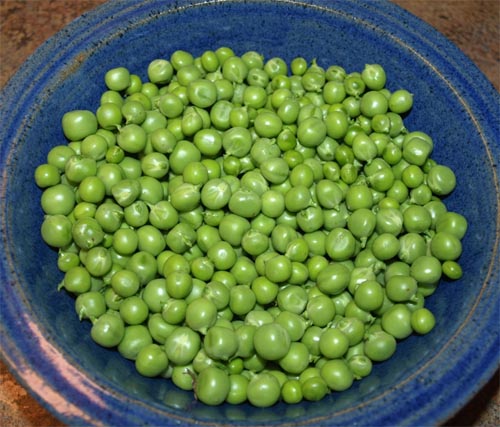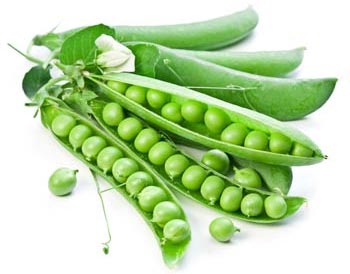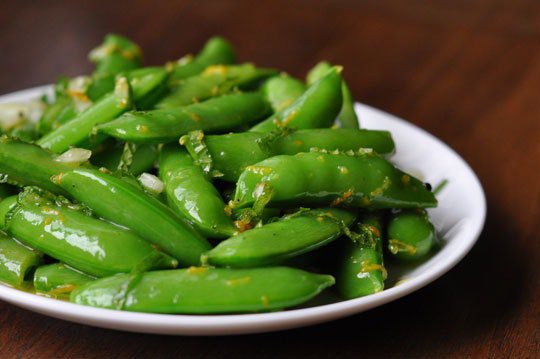Peas Be With You
By Ray Novitske, Fairfax Master Gardener
 The old American saying goes, “Planting your peas on St. Patrick’s Day will bring you luck come harvest time.” There is a lot of truth in that. Although you might need a little luck, a little knowledge will probably help you out more.
The old American saying goes, “Planting your peas on St. Patrick’s Day will bring you luck come harvest time.” There is a lot of truth in that. Although you might need a little luck, a little knowledge will probably help you out more.
Here in Virginia, planting dates for crops can vary depending on the last frost date. Virginia Cooperative Extension identifies three different regions for determining planting times based on these frost dates.. Recommended planting time for peas in our area is March — St. Patrick’s Day! Harvest time is May. That’s right — you can be eating fresh produce from your garden while your tomatoes, squash, peppers and melons are just being planted.
Peas (Pisum sativum) are native and were first cultivated in the Near East — Mesopotamia through Egypt. They were originally grown to be used in their dry form. Ancient Greeks and Romans grew peas, and peas were brought to North America by European settlers.
Peas are one of the earliest and easiest vegetables to grow in the garden. They are frost hardy — meaning you can grow them before the last frost. They grow best in cool weather and absolutely hate warm weather, so summers are out. When I grow them, the plants usually dry up to crispy lace once the hot days of summer arrive in June. Rip them out then, and plant your summer vegetables in their place.

English Peas
Types
Peas are put into three categories, or four depending on what source you are referencing.
-
- English or Garden Peas
These are the most familiar type where the peas are removed from the pod and eaten. Peas are seeds that grow and develop in pods on vines after flowering.If you like shucking peas, this is the type for you. Be prepared to shuck your heart out, because you need to grow a lot of peas and do a lot of shucking for one bowlful. Personally, when I grew these, they never made it to the kitchen because they were shucked and snacked on as they were picked. - Snap Peas

Snap Peas
With this type, the entire pod is cooked and eaten with the peas inside. They are picked while the peas inside are small and the pod is tender. If peas are past their prime eating time, they can be left on the vine to ripen and saved for planting the next crop. - Sugar or Snow Peas
The entire pod is eaten with little peas inside and are great in stir-fry vegetables. These are different from snap peas in that the sugar or snow pea pods are flat while the snap pea pods are somewhat plump. - Dry, Field or Split Peas

Snow Peas
These are allowed to mature and harden on the vine. They are harvested and dried and stored for cooking later, and are often used for soups and as ingredients for other dishes.
Planting
Peas will not germinate unless the soil warms to at least 40 degrees F. That’s barely above freezing, but remember that they do not like heat. Plant them in well-drained soil with a little organic material. Planting them indoors is not recommended because they do not take well to transplanting.
One method for getting a jump on the season is to germinate them indoors by controlling the temperature and thus achieving a higher germination rate. Place seeds between two sheets of wet paper towels on your counter or table. Once roots start to show on the seeds, plant them into your container or garden. Yes, peas can grow in containers, too.

Seeds beginning to root
Although peas are legumes, they are not good at nitrogen-fixing in the soil like other legumes. This is why many people use rhizobium bacteria as an inoculant at planting time. Rhizobium bacteria live in nodules in the roots and take up nitrogen from the air, converting it to a useable form. To increase the number of these bacteria, Rhizobium leguminosarum biovar viciae can be added to the seeds before planting, either as a wettable powder or as a granular form applied to the seeds in the ground. If you plant peas in areas where other legumes like beans have been grown, an inoculant would not be needed.
Growing
Make sure peas receive enough water, especially when the pods are forming after flowering. Remember that our spring can have some rather warm and dry weather. Mulching can help do that by keeping the root zone moist and cool.
Do not over-fertilize. Excess nitrogen causes lots of lush leaves and too little flowering and pea production.
There are few problems, but one that I have encountered in our heavy clay soil is rot. Cool damp weather can promote rot and decay, especially as the seeds start to sprout. I find it more prevalent with heavy, spring rains. Sometimes powdery mildew or aphids are mentioned as pests, but I have not seen them.
Peas grow on vines and need support. Some dwarf varieties are self-supporting, meaning they will use each other for support, but still do best when there is something to crawl up. Taller varieties need to be staked or trained on a fence or support. Chicken wire at least 36 to 48 inches tall on end posts will work. Sometimes stakes with sturdy horizontal string or wire tied between them is all that is needed.
Harvesting
Pick when the peas are tender. It is recommended that when picking, cut the pod off from the vine instead of pulling it off to avoid damage to the vine. They should be harvested and eaten quickly because the sugar in them begins to turn to starch as soon as they are picked. Peas freeze easily for later use.
For beginner gardeners, peas are a great first step. They can be planted early when the gardening bug hits, and reward you early with the fruits of your labor. Be sure to plant enough though.
Recommended varieties for Virginia
‘Knight’ (tolerates heat — garden pea)
‘Sugar Snow’ (tolerates downy mildew and wilt)
‘Wando’ (flat snow pea)
‘Dwarf Gray’ (sugar pea)
‘Green Arrow’ (English pea)References
Vegetable Planting Guide and Recommended Planting Dates, Virginia Cooperative Extension
Vegetables Recommended for Virginia, Virginia Cooperative Extension
Peas, Cornell University
Green Peas, University of Maryland Home & Garden Information Center
Garden Peas, Clemson Cooperative Extension
How to Grow Peas, Michigan State University Extension
Plant Peas, Please, NC State Cooperative Extension
…updated 2022
- English or Garden Peas